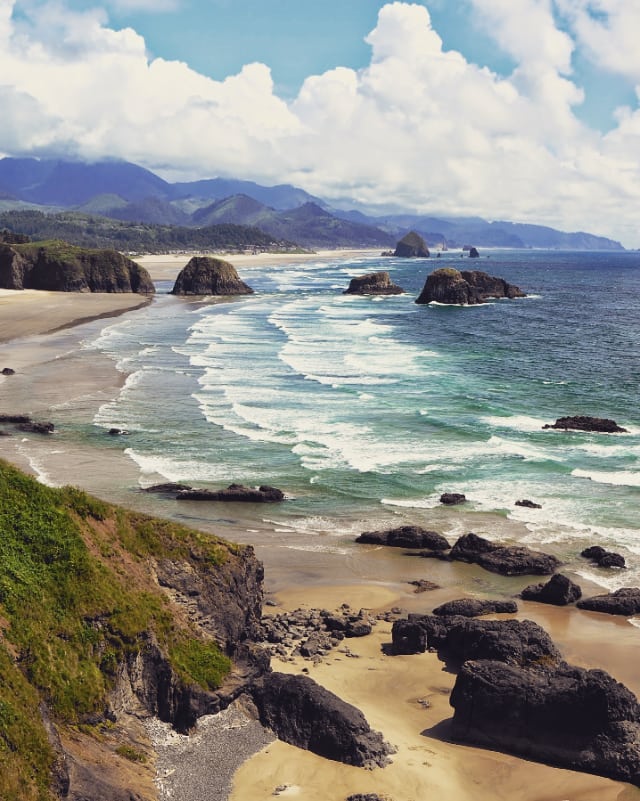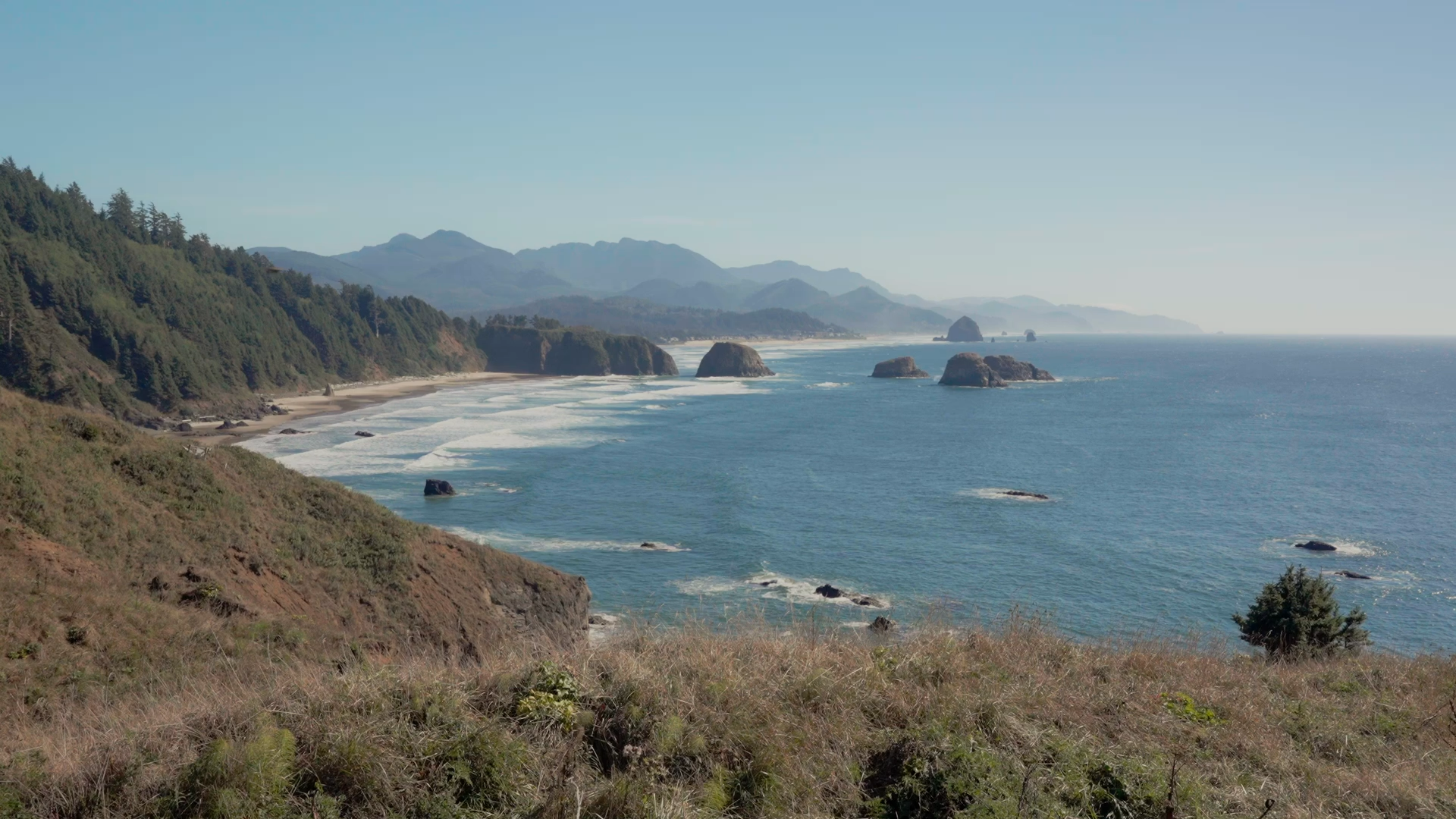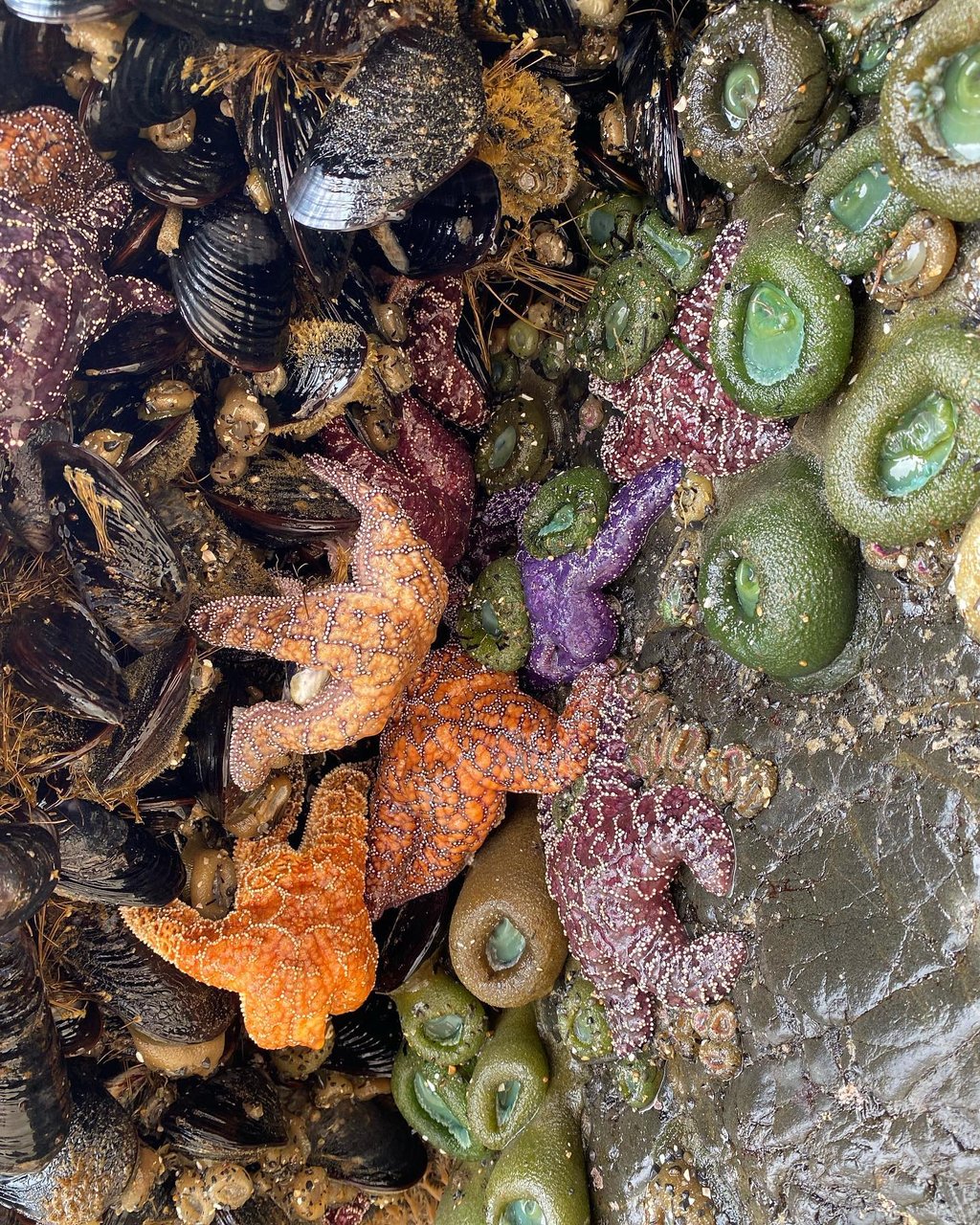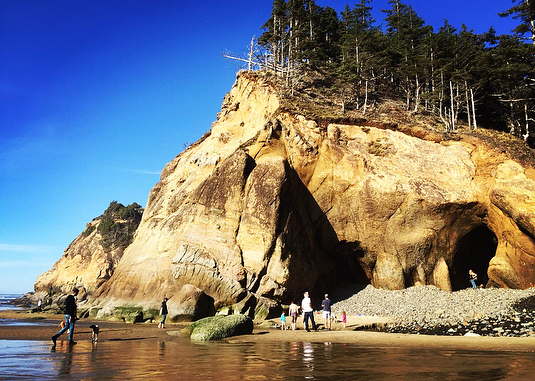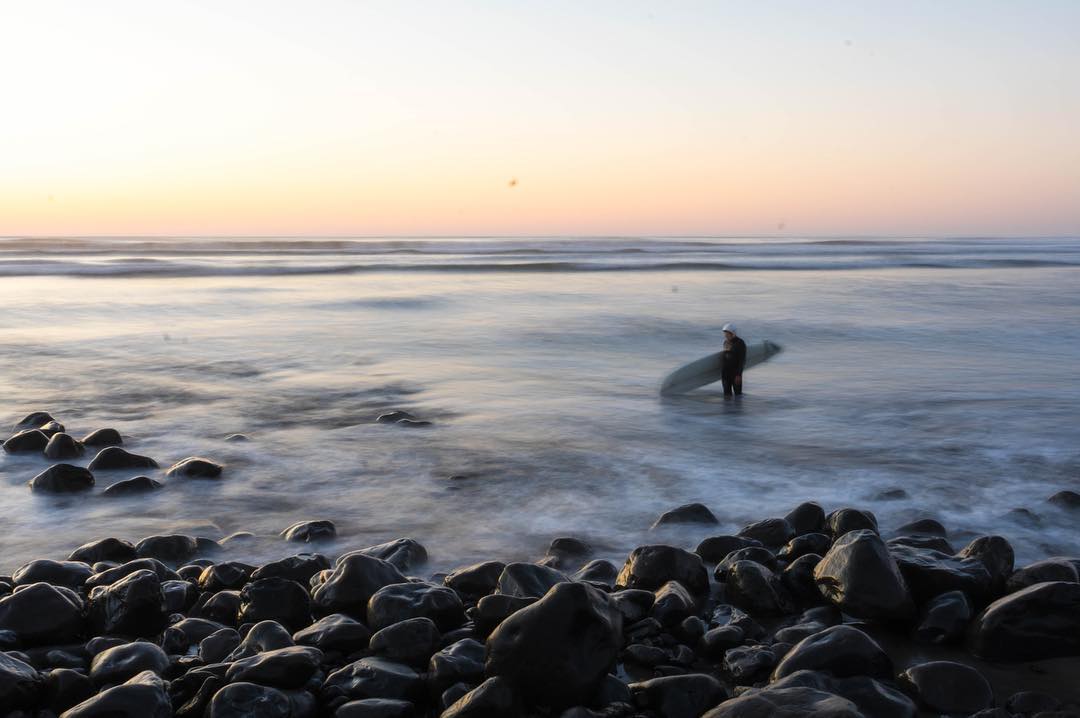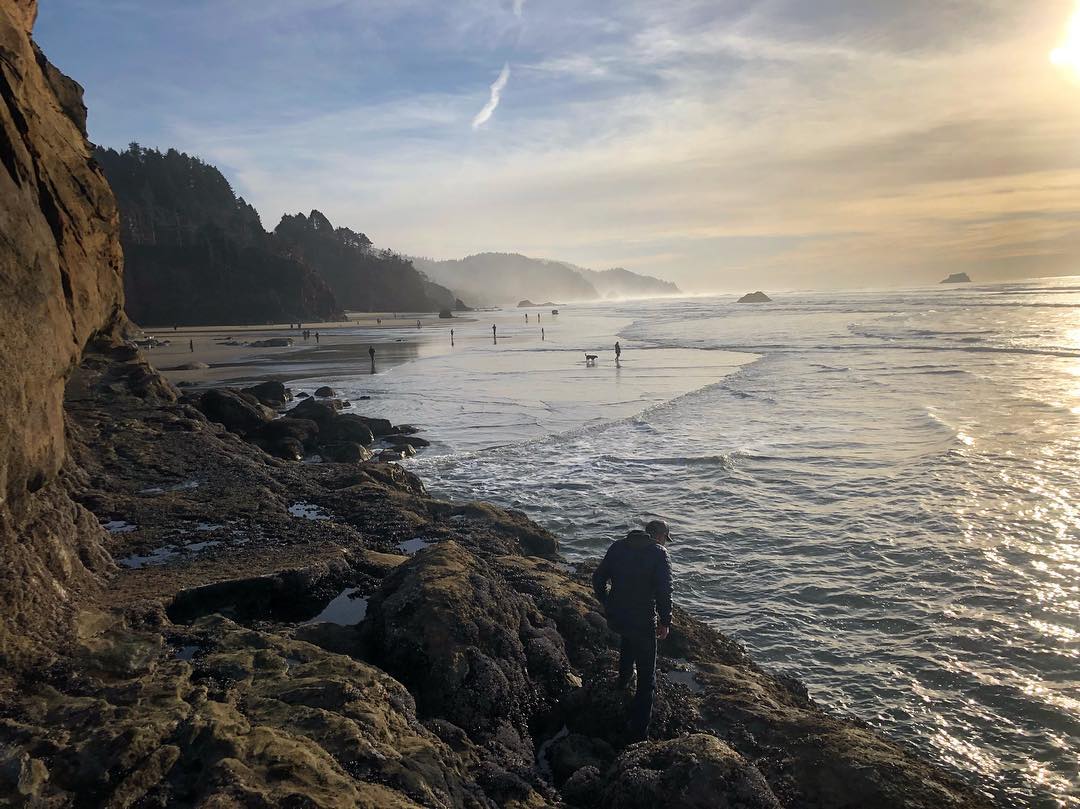
Discover Watery Worlds inOregon Coast Tide Pools
Tide pools are a window into life under the waves. These sensitive ecosystems require thoughtful care as we explore their treasures.

SAFE EXPLORING
Tidepooling can be dangerous due to sneaker waves and shifting tides. Don’t turn your back on the ocean! We also ask that you respect marine life. These ecosystems are delicate; avoid touching and keep dogs clear of them to protect these precious environments.
GET THE LOCAL GUIDE
Looking for local favorite seafood spots?
FAQs: Oregon coast tide pools
Oregon Coast tide pools are shallow pools of seawater that form in the rocky intertidal zone. They are important ecosystems because they provide a unique habitat for a diverse array of marine life, including sea stars, anemones, crabs, and various mollusks.
These tide pools serve as a critical environment for the breeding and feeding of many species and offer a unique opportunity for visitors to observe marine life up close. Protecting these delicate ecosystems ensures the survival of the species that depend on them.
When exploring Oregon Coast tide pools, it is crucial to do so responsibly to protect marine life. Always step on bare rocks rather than on the plants or animals. Avoid touching or disturbing the creatures, as they are fragile and can be easily harmed.
Use a guidebook or app to help identify species without handling them. Additionally, keep dogs on a leash and away from the tide pools to prevent any accidental damage to the ecosystem. Always be mindful of the tides and avoid turning your back on the ocean to stay safe from sneaker waves.
It is essential to avoid touching marine life and keep dogs away from Oregon Coast tide pools to protect these fragile ecosystems. The organisms living in tide pools are often delicate and can be easily harmed by human interaction. Oils and chemicals from our skin can damage sensitive creatures like anemones and sea stars.
Additionally, dogs can accidentally trample marine life and disturb their habitats. Respecting these guidelines helps preserve the biodiversity and health of tide pool ecosystems.
Oregon Coast tide pools are home to a fascinating array of marine creatures. Visitors can observe colorful sea stars, which play a vital role in the ecosystem by preying on mussels. Anemones, with their flower-like appearance, use their tentacles to capture small prey. Crabs scuttle among the rocks, and various mollusks, such as snails and mussels, cling to surfaces.
You might also spot small fish, nudibranchs (sea slugs), and occasionally an octopus. These tide pools offer a vibrant window into the underwater world of the Pacific Northwest.
One of the best locations to explore Oregon Coast tide pools is Ecola State Park. This scenic park offers excellent tide pooling opportunities, especially around Indian Beach and Crescent Beach. The rocky shores and diverse marine life make it a prime spot for observing the fascinating creatures that inhabit the tide pools.
Remember to check the tide charts and visit during low tide for the best experience. Additionally, Haystack Rock in Cannon Beach is well known for its vibrant tide pools.

